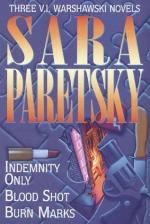|
This section contains 10,662 words (approx. 36 pages at 300 words per page) |

|
SOURCE: “Killing Order(s): Iphigenia and the Detection of Tragic Intertextuality,” in Yale French Studies Autour de Racine: Studies in Intertextuality, Yale University, 1989, pp. 81-107.
In the following essay, Goodkin discusses the role of the Iphegenia myth in Paretsky's Killing Orders.
1. the Detection of Intertextuality
One of the recurring motifs in the current awakening of critical interest in detective fiction has been the parallels between the detective novel and tragedy. Shoshana Felman calls Sophocles’ Oedipus Tyrannus “the classical analytic detective story,” and points out that a number of critics have approached the Oedipus from the perspective of the detective story. Equally important for our purposes here are those critics who, while recognizing the similarities between tragedy and detective fiction, oppose the two. Dennis Porter contrasts “mythic crime” such as is found in Greek tragedy, Shakespeare, or Racine with the sort of “profane crime encountered on country highways and...
|
This section contains 10,662 words (approx. 36 pages at 300 words per page) |

|


